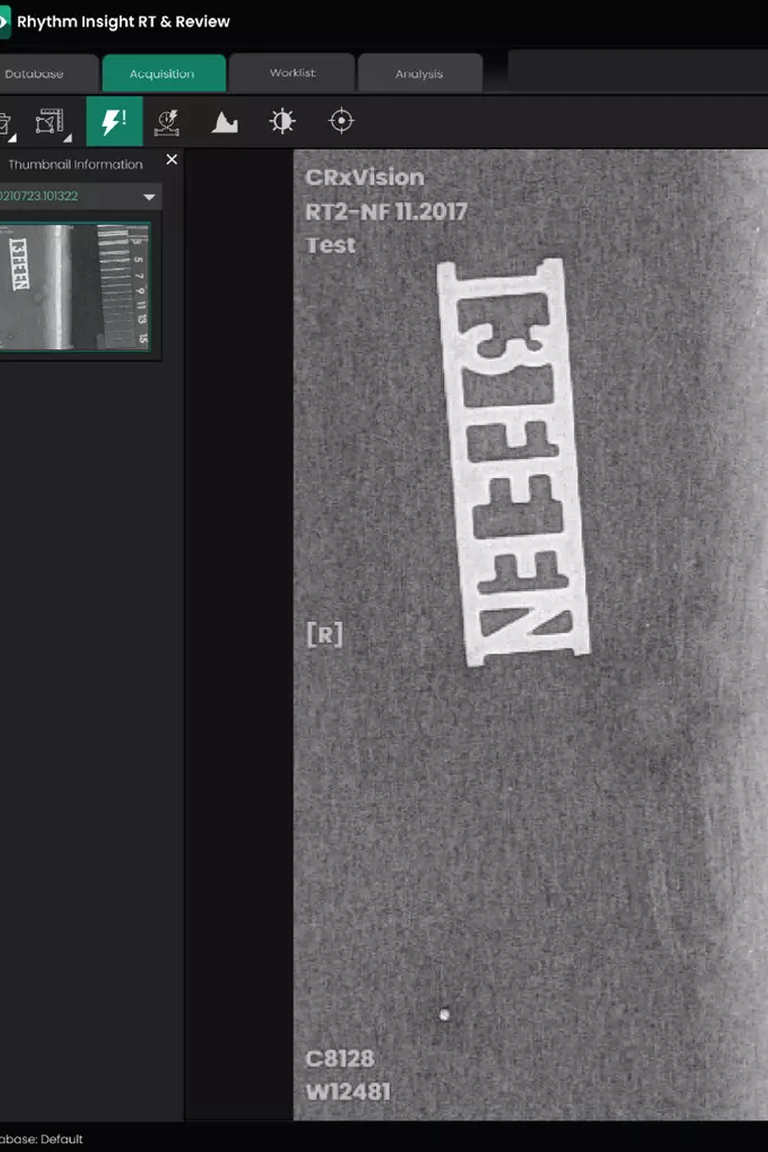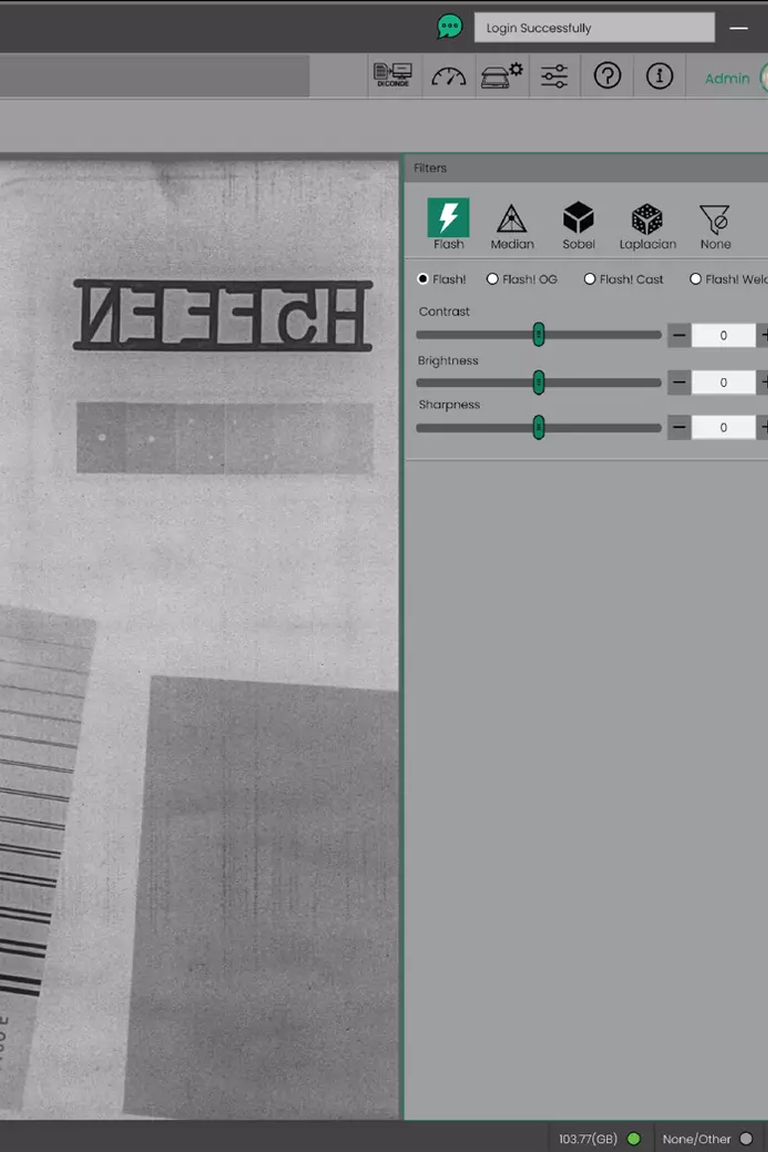
NDT for Laboratories and Academia
Technologies made for your research challenges
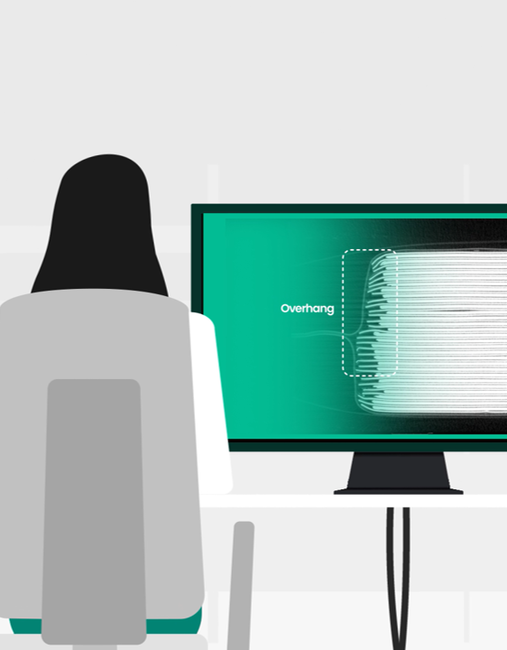
Inspection and NDT solutions for Laboratories and Academia
Since the detection of X-rays 125 years ago, Waygate Technologies has been on the cutting edge of nondestructive testing solutions for laboratories and academic study. We’ve pioneered technologies including nanofocus X-ray tubes, micro- and nano-computed tomography, and ultrasonic inspection. Leading scientists around the globe, in fields from materials science to geology to archaeology, rely on our superior imaging capabilities to make the invisible visible.
For more than 20 years, we have also been supporting the battery industry, which develops and manufactures batteries that are becoming increasingly important for our daily lives. An important role is played by academia and laboratories researching the optimization of old battery types and the development of new ones. With our hardware, software and service solutions, we support them in working on the next technological breakthrough.
Navigating complexity: advanced battery technology for your research challenges

Universities and labs often face challenges when testing new battery technologies

Advanced battery technology requires sophisticated testing methods

Battery life cycle assessment involves evaluating environmental impact, energy efficiency, and recyclability

Limited budgets can hinder universities from acquiring advanced equipment or experienced personnel
How Waygate Technologies can add value
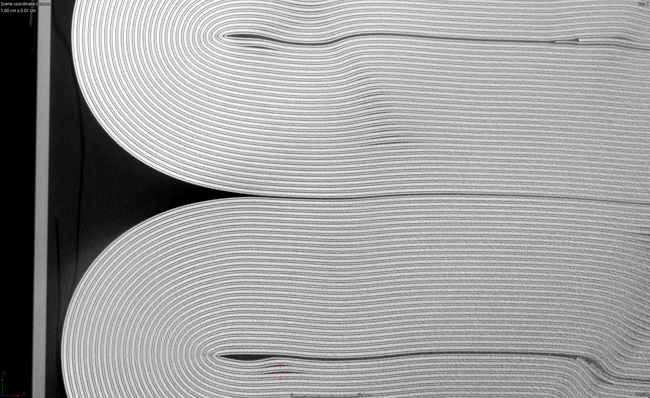
CT scans provide non-destructive, high-resolution 3D images of battery internals, revealing minute details without disassembly
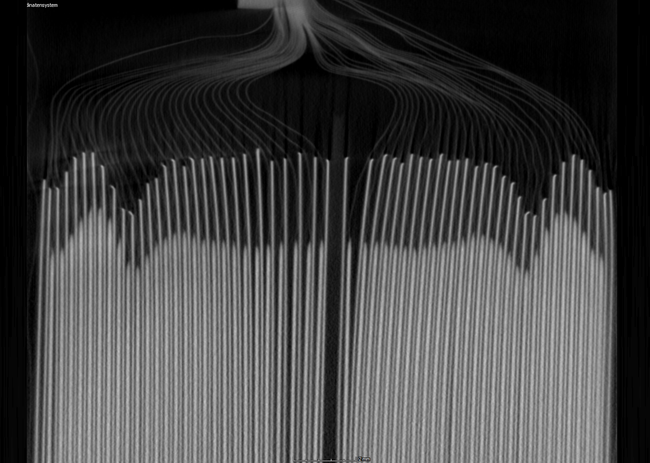
CT scans analyze internal structures under stress, revealing how materials and designs withstand mechanical and thermal cycling for long-term durability
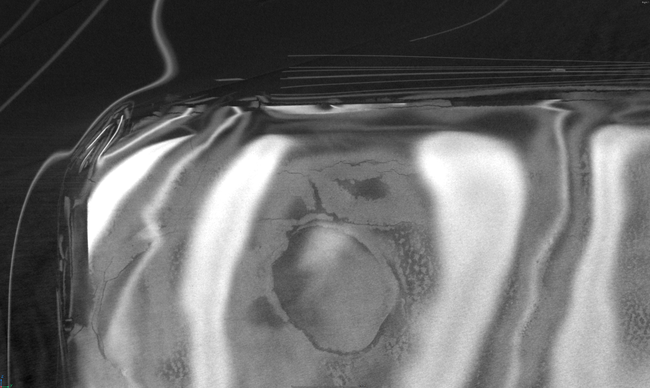
CT scans identify micro and nano-scale defects early in development, enabling design optimization for improved performance and safety
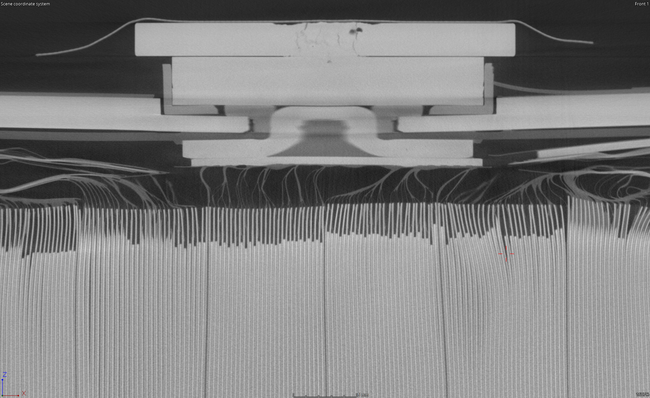
CT scans verify electrode alignment and provide data for structural optimization, enhancing battery performance and efficiency

CT scans assess electrolyte distribution uniformity, aiding in filling process optimization and performance enhancement

CT scans analyze batteries throughout their lifecycle, revealing degradation mechanisms and correlating them with performance data
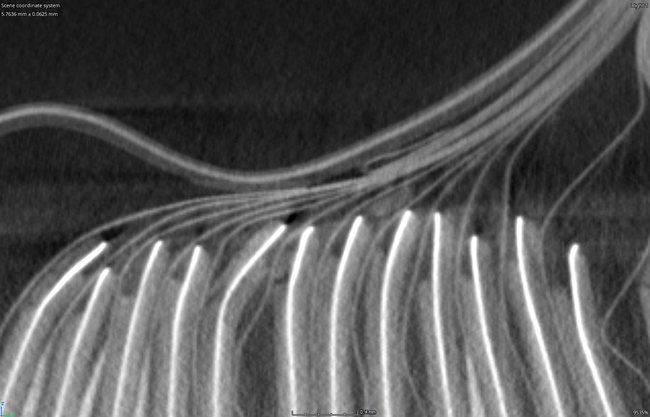
CT scans analyze failed batteries to determine root causes, improving the reliability and safety of future designs
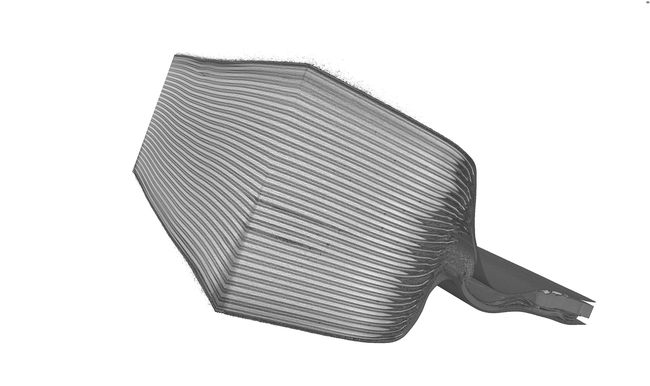
CT scans enable rapid prototyping and iterative development by providing immediate feedback on internal structures
Our Hardware Offerings

Our flagship computed tomography solution Phoenix V|tome|x M Neo sets a new standard in flexibility, speed, and detection quality, making it the ultimate solution for battery testing, offering precise anode and cathode measurements, as well as failure analysis for various battery cell configurations.
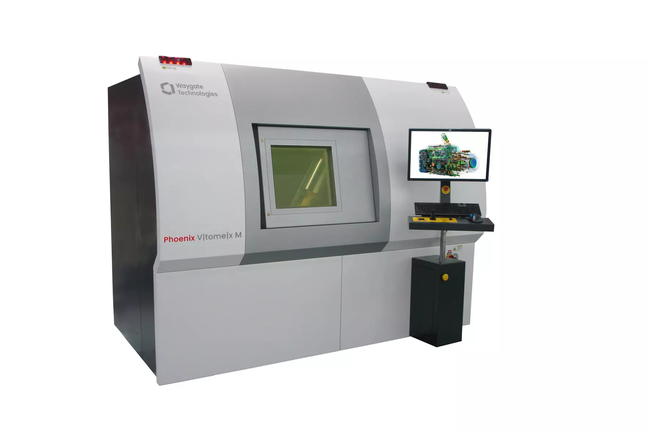
Designed for 3D metrology and analysis with scatter|correct technology to automatically remove scatter artifacts for higher image quality. High-quality 3D micro- and nanoCT results and outstanding metrology precision with 300 kV penetration power enable improved safety and throughput.

A powerful, compact 450 kV precision CT scanner specially designed for large sample 3D computed tomography. Its production-oriented, low-maintenance design offers speed and flexibility allowing for safe production inspection and metrology with a VDI/VDE 2630-1.3 conform precision spezification of SD ≤ (15 ± L/50 mm) µm.

The combination of penetration power and our advanced CT features such as Scatter|correct technology make this CT system predestined to scan extremely large, heavy and high absorbing complex parts and assemblies with unmatched speed, precision, and ease of use — enabling faster, more precise inspections.
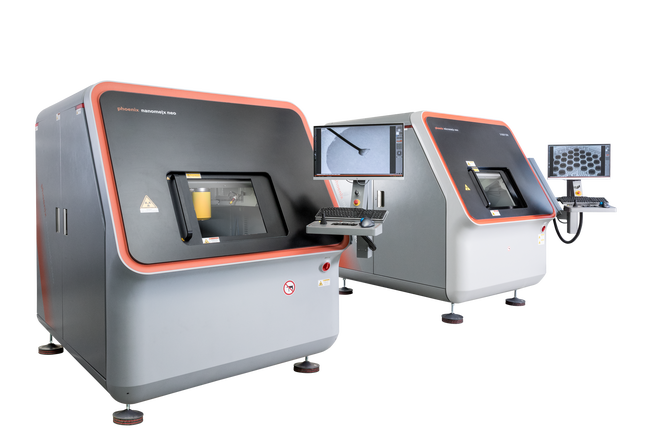
The Phoenix Microme|x Neo and Nanome|x Neo provide high-resolution 2D X-ray technology, PlanarCT and 3D computed tomography (CT) scanning in one system. The systems are ideally suited for efficient non-destructive testing (NDT) of electronic components such as semiconductors, PCBAs, lithium-ion batteries and more.
Our Software Offerings
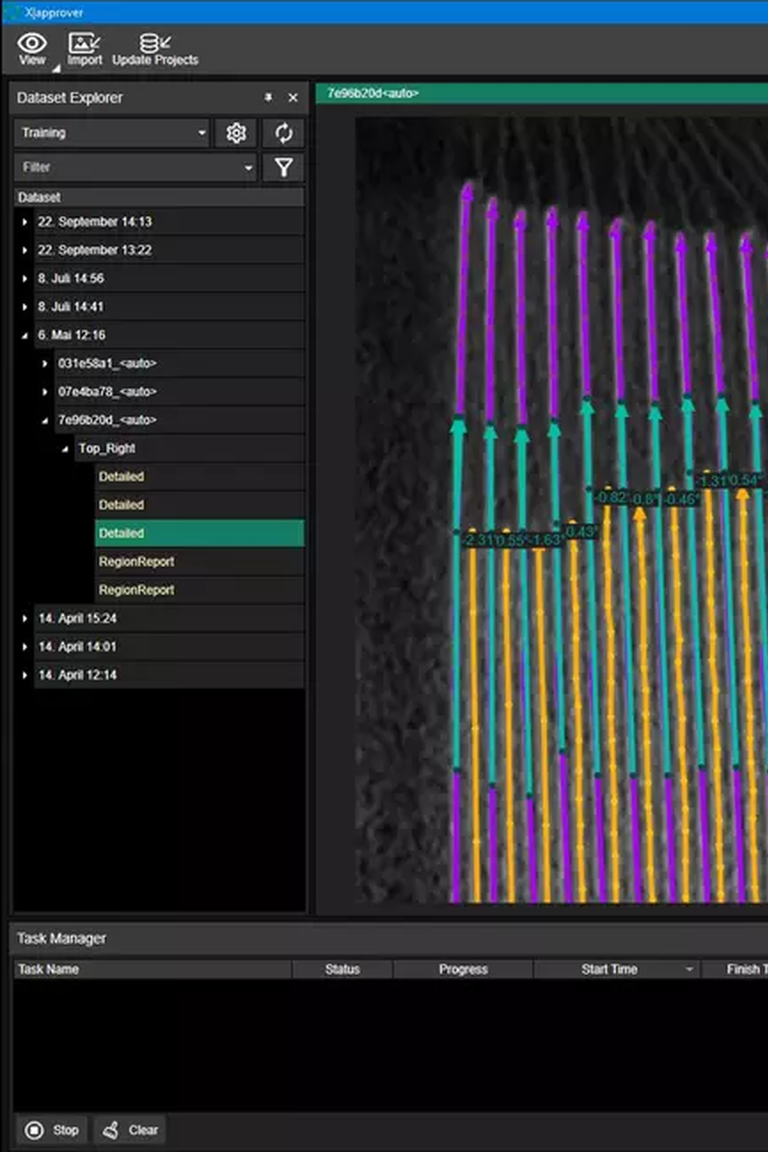

Software for automating your defect analysis workflow
AI-based on-premises ADR software (Automated Defect Recognition) with specific teachable algorithms to evaluate the quality of components for a wide range of parts and leverage automated detection of microstructural defects from CT images
Our Service Offerings

Our Customer Solutions Center experts offer a broad range of services ranging from in-depth consultations and feasibility studies to evaluate the best inspection solutions for individual inspection tasks, highly customizable testing solutions covering defect analysis or 3D measurement or on-demand or pay-per-scan inspection services with latest Waygate Technologies NDT equipment.
Datos|x software is used to acquire and reconstruct CT data volumes from 3D systems. X|approver, is machine learning on-premises ADR software (Automated Defect Recognition) with specific teachable algorithms to evaluate the quality of battery and other components. Waygate Technologies' software consists of the full and intuitive workflow management as well as a comprehensive ADR library running in the background of your production, delivering automatic decision making. Reporting functions allow to identify potential negative trends in production at just a glance. Authorized operators can parametrize scanned samples (e.g. for highly accurate overhang issue detection), and the algorithms get more accurate over time. The highly consistent defect analysis results can reduce the workload for highly qualified operators and thus helps companies become more operator independent. Waygate Technologies' software can also be deployed on the cloud to do additional ADR from batteries and other domains.
The structure of batteries is complex and there is no common standard between suppliers. Once the battery is built, it is sealed and is like a black box. The true integrity of the structure inside is unknown. To avoid scrap, it is necessary to look inside non-destructively, and this works best with CT inspection technology. Our Phoenix product line provides certainty for original manufacturers and suppliers and helps reduce costly scrap and recalls.
With 3D CT technology, we can look inside the battery after assembly, inspect in greater detail, and assess the entire cell more accurately. That makes CT the best solution for finding the cause when batteries fail or test poorly. It thus reduces failed tests, and thereby scrap, costs, and environmental impact. However, the main goal of our customers is to optimize cost efficiency. Every cell that tests as poor lowers efficiency and drives up costs. CT is a universal tool to control the cell.
For example, the batteries used for electric vehicles or energy storage are made up of modules, and each module in turn is made up of multiple cells. When inspecting the batteries at the cell level, engineers examine the mechanical fabrication to see if there are any inclusions, the homogeneity of the electrodes, internal connections (welding), and the arrangement of the electrodes in the cells. Inspection of the electrode geometry involves examining the spacing between the electrodes, their size and orientation with respect to each other, their distance from the wall, and their angles. With 2D X-ray systems this might be possible, too, but inspectors will not see the whole picture because usually only one or two types of significant defects are visible within all the overlaying features of an X-ray image. Industrial computed tomography (CT) provides a complete picture of the critical parts of the cells and their arrangement within the casing. Inspectors can thus find any kind of defect causing deviations in X-ray absorption.
Battery research institutes, original equipment manufacturers as well as suppliers in the automotive and electronics industries use CT for quality assurance in development, production and failure analysis. When a battery fails in a car or electronic device and comes back from the field, a CT test is performed. Opening the battery can damage it. Therefore, a non-destructive inspection is necessary in advance. CT inspection can be used to prove if a defect was present before the battery was opened. If technicians then need to open a module, CT shows them with micrometer precision where the defect is to be found and where they can safely place their tools for detailed destructive examination.
To go even deeper, Waygate Technologies partners with industry domain experts. While CT allows precise 3D localization (within a few microns) of anomalies within batteries and other specimen, our partners help expose anomalies using lasers for micrometer-precise surgical cuts into the object under investigation, polish them with plasma and analyze them down to the atomic level using electron microscopy. This synergy of non-destructive 3D defect detection and localization and laser-based destructive defect exposure at the location determined by CT followed by defect analysis through scanning electron microscopy for the first time enables a multiscale workflow from the macro scale to the atomic.
CT inspection allows the inspection of different types and sizes of batteries and defects on the same line or several different lines. Furthermore, it reduces changeover time and personnel to move large batteries for inspections.
The variety in battery cells is very high. The electric vehicles industry for example is in a kind of constant learning process. Because in this emerging mass production sector data is still being gathered on where there are issues, there is no statistical process control yet. Processes have to be redefined often. Each time something is changed the learning curve starts all over again. In the electronics sector, the maturity level of the batteries is higher, but on the other hand, much greater mass production volumes have to be managed here.
Waygate Technologies offers ADR software as part of the comprehensive, agnostic data management software platform InspectionWorks and in combination with expert service teams. Once set up and implemented at a customer site by Waygate Technologies experts, the X|approver ADR software is able to automatically train itself on the inspection tasks the individual customer usually performs and the defects which occur during these tasks. By learning about the specific failure types, the ADR software becomes more and more accurate, reducing false negatives and ensuring an increase in inspection efficiency.
Our Phoenix product line provides certainty for both OEMs of vehicles and electronic devices and suppliers.
We can always find new defects in battery production lines. Our CT systems help by analyzing the entire battery. Other test equipment focuses on a single failure mode. They perform a test for one fault, and once that has been eliminated, a sample might still test poorly because of a different fault. That's not the case with CT. 90 percent of the time, our CT systems can detect all faults because they are very flexible and the Waygate Technologies experts can help react quickly to test for any new fault modes. The main CT solution currently used by battery manufacturers is the Phoenix V|tome|x line, which is available in different versions depending on individual customer requirements. The experienced service and support teams at Waygate Technologies are ready to assist customers with planning, set up, adjustments and maintenance at any time.
When it comes to fully automated mass inspection, our new Speed|scan HD solution is now being integrated into first battery fabs of world-leading battery manufacturers.
Waygate Technologies has more than a decade of experience in non-destructive inspection of batteries and detecting faults. The same manufacturers who already have experience in the production of cell phone batteries began to build larger batteries for electric vehicles. Even though EV batteries are a completely different application area, Waygate Technologies has a wealth of experience in battery inspection and the automotive sector that can be deployed quickly. The combined knowledge across the CT teams allows Waygate Technologies to set up machines well and troubleshoot quickly. Our systems are extremely versatile and easy to operate. Our experienced service and support teams are ready to assist customers at any time and will help manufacturers find the best solution for their respective challenge.
No, many customers start with inspection services in one of Waygate Technologies´ global Customer Solutions Centers. Guided by experienced application engineers they learn which CT solutions best fit their individual inspection tasks. If they have extensive inspection demand and once they are convinced of the benefits, they might at a later time consider buying a system for their fab instead of hiring inspection services on a hourly basis.

